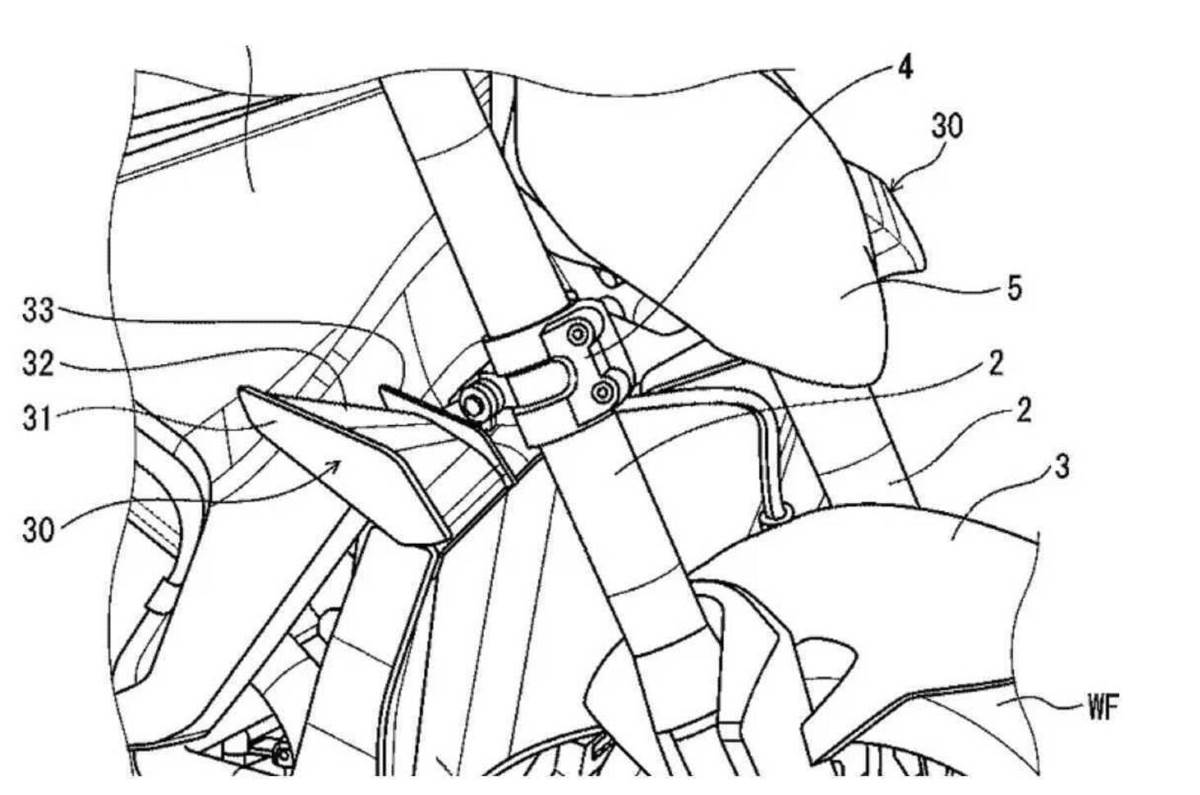The next-gen Honda CB1000R could use the older CBR1000RR’s engine.
Of all the flagship supernaked/hypernaked bike offerings from various manufacturers, the current-gen Honda CB1000R is the least powerful and has the most basic underpinnings and software. All that might soon change, according to new patent drawings, which hint that the next-gen Honda CB1000R is set to match its competition, and then some. The biggest design highlight is the presence of winglets, a trend that’s becoming increasingly more widespread with each passing day.
- Current-gen CB1000R makes 146hp and 104Nm
- New monocoque chassis and horizontal rear shock like the Panigale
- Engine could be borrowed from pre-2020 CBR1000RR Fireblade
Next-gen Honda CB1000R naked bike: details
Currently, the Honda CB1000R makes peak output figures of 146hp and 104Nm, which are at least 20hp and 10Nm off the next best figures of the BMW S 1000 R. Helping Honda make up some ground would be the adoption of the pre-2020 998cc inline four engine found in the previous-gen CBR1000RR Fireblade. Hinting that this might actually be the case is the presence of a much larger radiator and oil-cooler guard, according to the drawings. The current-gen CB1000R has a single-piece radiator, suggesting that the engine in the next-gen bike will have have higher sheer performance.
The exhaust also sports a revised twin-port design, indicating that it will probably have a servo-actuated exhaust valve (a feature commonly seen on modern-day bikes) to help comply with noise limits as well as emissions regulations.
Complementing this new engine will be underpinnings that are more capable of handling this power, with the monocoque chassis directly bolting on to the engine. While the front suspension is nothing out of the ordinary – an upside down fork – the horizontally-mounted rear monoshock is uncharted territory for Honda in this space, and both components are similar to what’s seen on the V-Twin Panigale models. The traditional single-sided swingarm, a mainstay of the CB1000R design language, ever since its inception in 2009, is present here as well. The overall design of the next-gen bike looks to be an evolution of the current bike, with one major difference.

Winglets are something not seen before on a Honda naked bike.
That difference is the presence of aerodynamic aids in the form of winglets. In these diagrams, the winglets appear to be bolted directly to the radiator shroud. Since 2019, however, the CB1000R has gone down a more neo-retro design route as opposed to the sharper, more angular design language of its contemporaries. And this has, arguably, worked in its favour. It will be interesting to see how Honda executes the adoption of winglets into the next-gen bike.
Another small design change is the placement of the indicators on the newer model. While the current CB1000R has indicators mounted conventionally, near the tail-lamp, this new bike shifts them to vertical slits on the swingarm-mounted rear hugger, which also doubles up as the number plate.
What could also be a possibility is the presence of two variants – one standard and one top SP model (like on the flagship CBR1000RR-R Fireblade). All in all, Honda seems to be gearing up to launch a decidedly more fierce attack on the supernaked segment with the next-gen CB1000R, and this new model seems to have the tools needed to do so. Stay tuned to this space for more.
Traditionally, Honda has been very reserved with the CB1000R. Are you excited to finally have a bona fide contender from the Big Red? Let us know in the comments section below.
Also see:
Honda CB750 Hornet revealed

